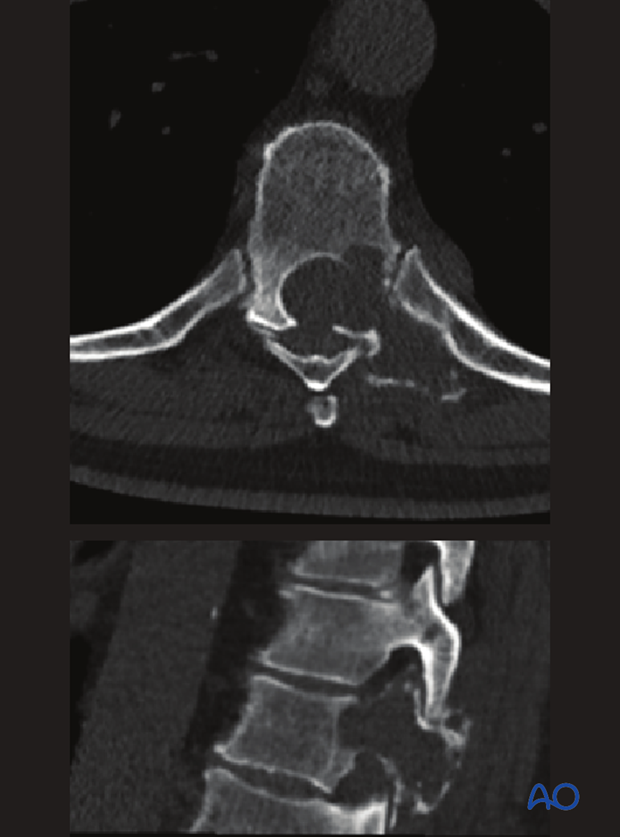Evaluation of stability
1. Definition of stability
Spine instability due to cancer is defined as “Loss of spinal integrity as a result of a neoplastic process that is associated with movement-related pain, symptomatic or progressive deformity, and/or neural compromise under physiologic loads”.
2. Spinal neoplastic instability score (SINS)
Patients with tumor related mechanical instability who experience pain with movement may benefit from stabilization.
Evaluation of spinal stability in the setting of cancer is facilitated with the use of the Spinal Neoplastic Instability Score (SINS).
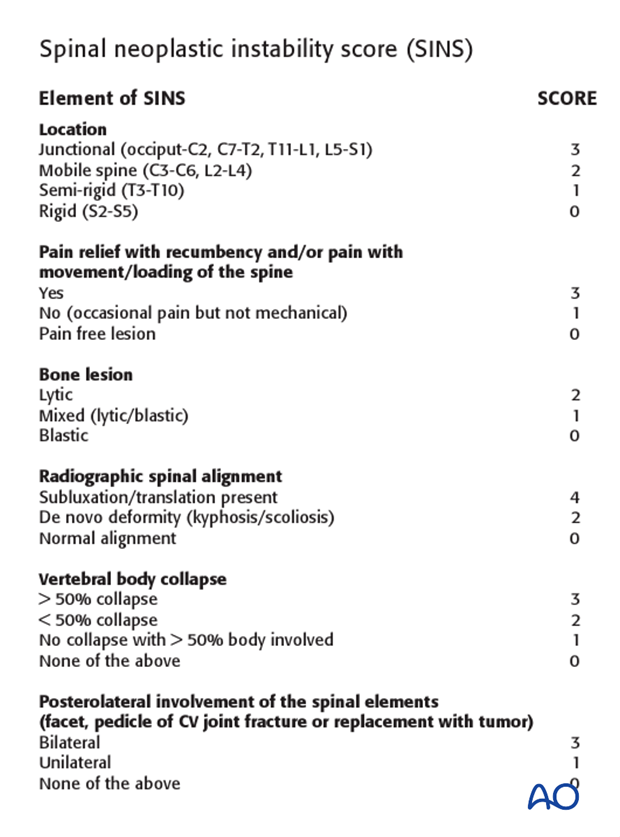
SINS scores range from 0-18.
0-6 : No mechanical instability.
7-12 : Indeterminate stability based on the SINS. Patients with who experience mechanical pain generally benefit from stabilization.
13-18 : Mechanically unstable fractures. Stabilization is normally required in consenting patients who are fit for surgery.
The SINS score is determined with the use of CT (preferred) and MRI scans.
Examples of findings are given below:
3. Bone lesions
Lytic bone lesion.
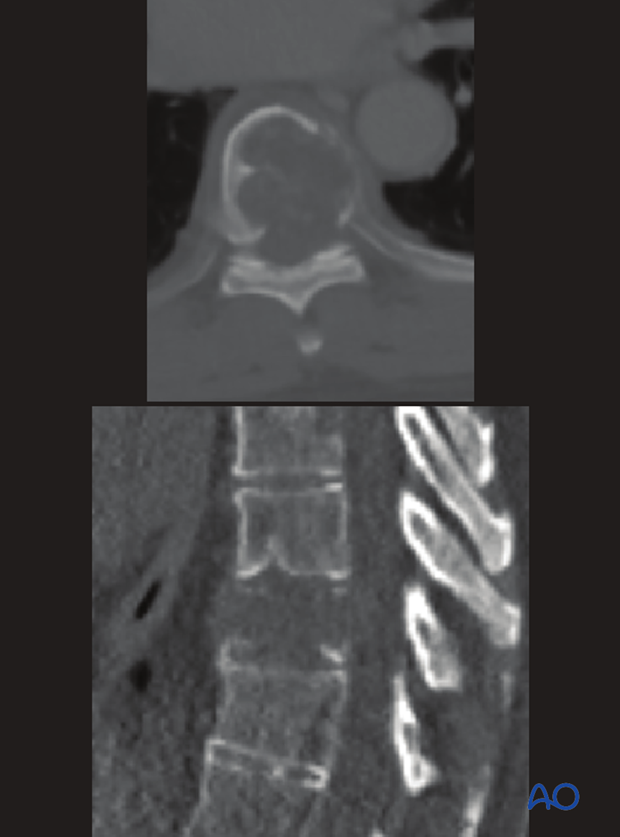
Mixed lytic and blastic bone lesion.
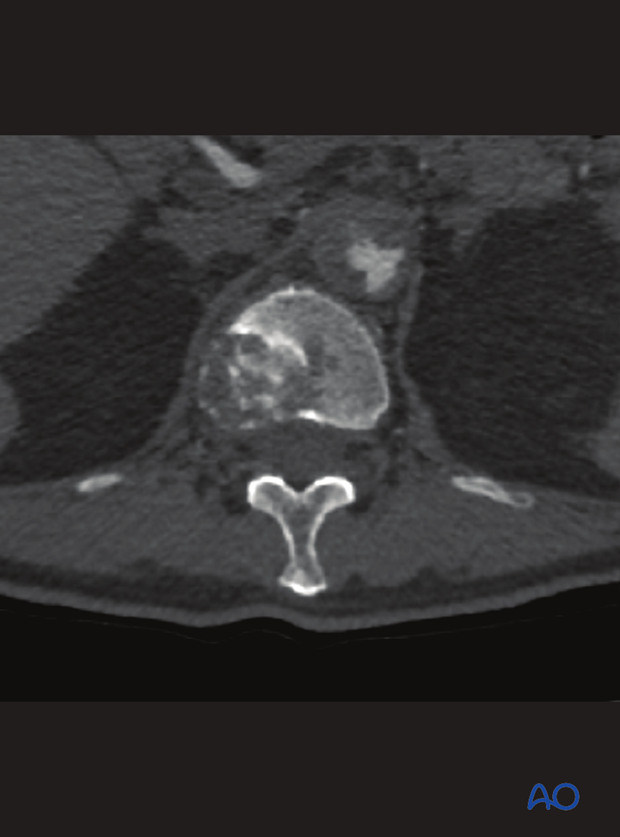
Blastic bone lesion.
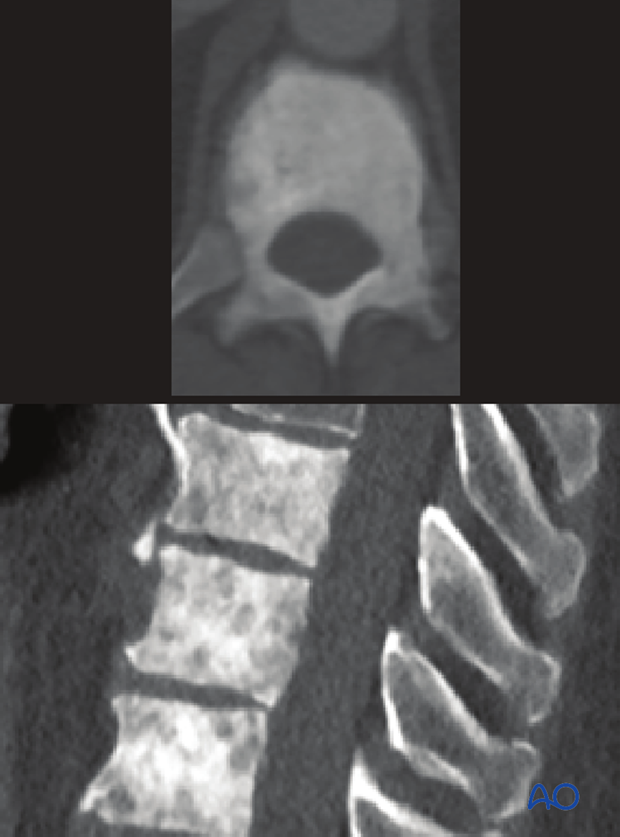
4. Radiographic spinal alignment
Normal alignment
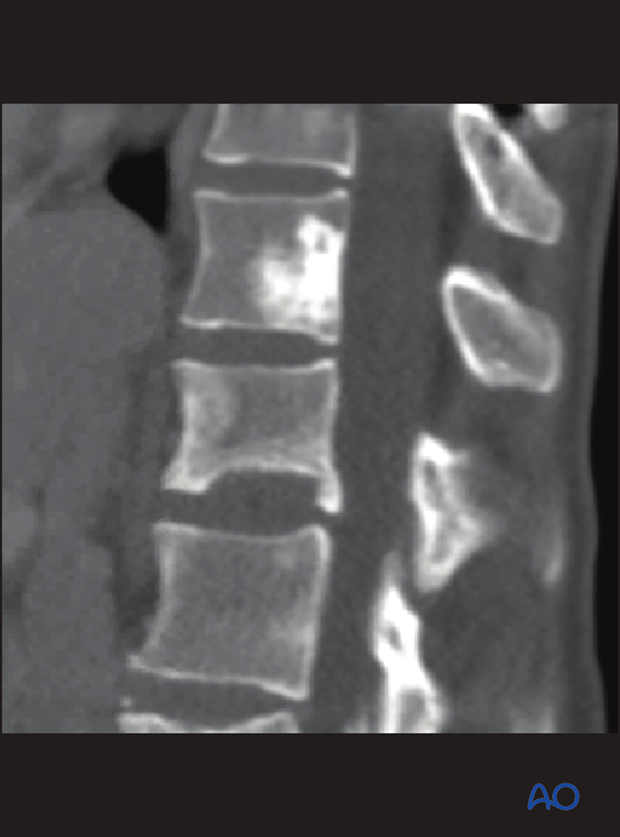
Subluxation/translation
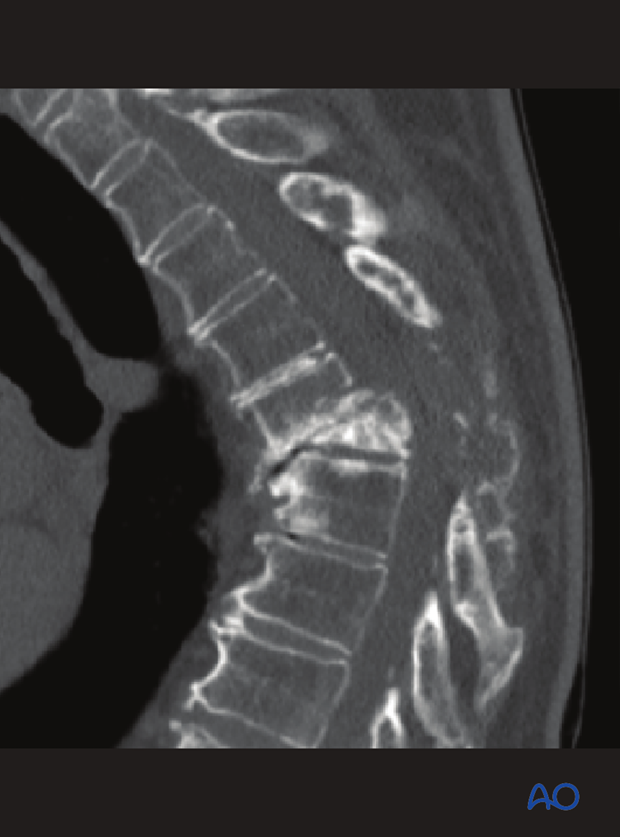
De novo deformity
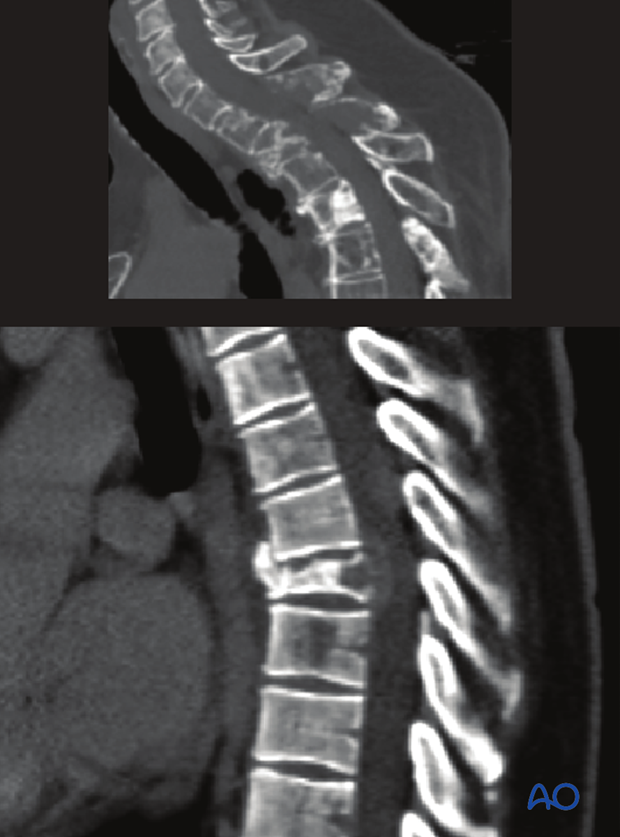
5. Vertebral body collapse
More than 50% vertebral body collapse.
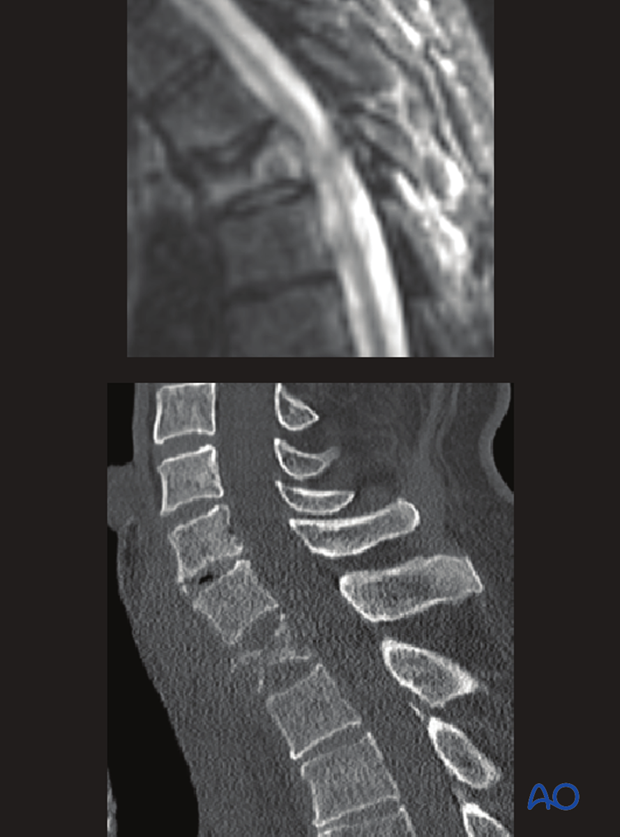
Less than 50% vertebral body collapse.
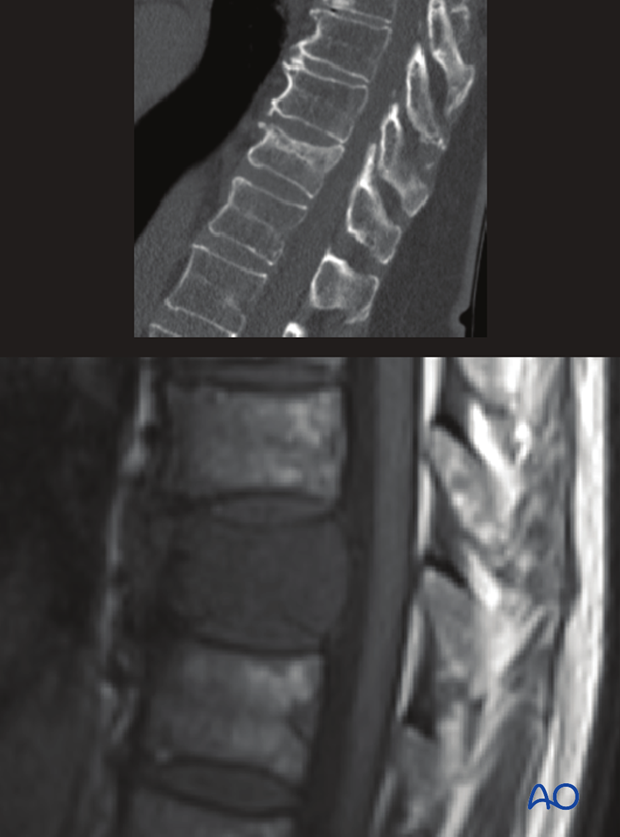
No vertebral body collapse, but more than 50% vertebral body tumor involvement.

No vertebral body collapse, and less than 50% vertebral body tumor involvement (none of the above).
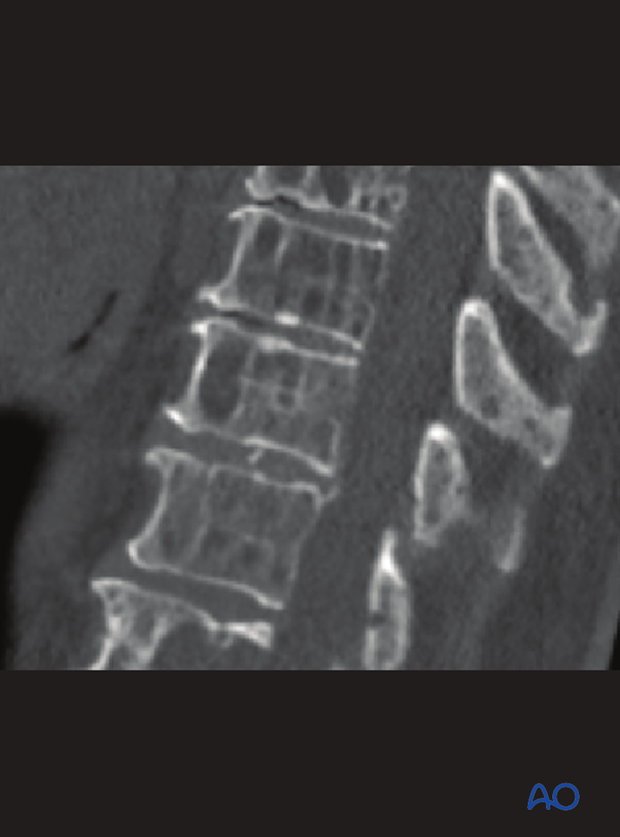
6. Posterolateral involvement of the spinal elements
Bilateral
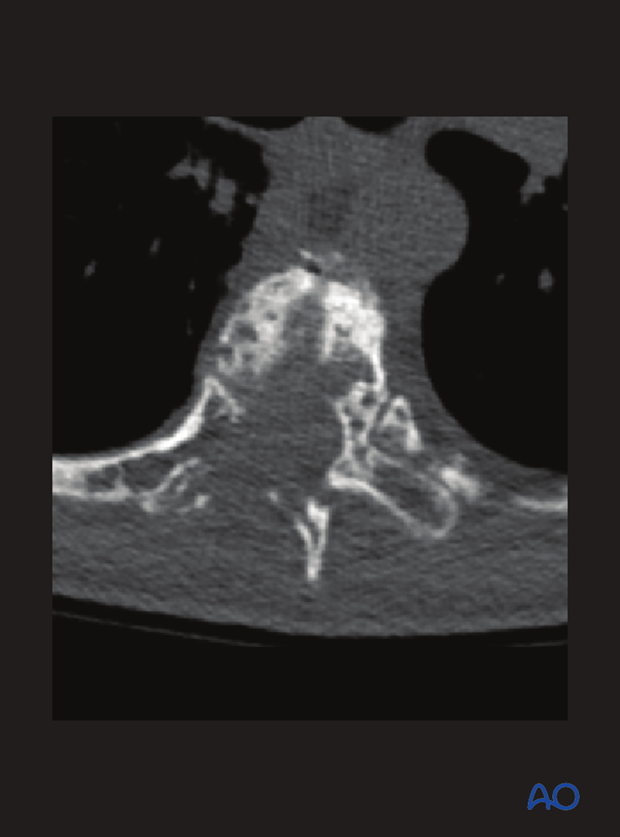
Unilateral
